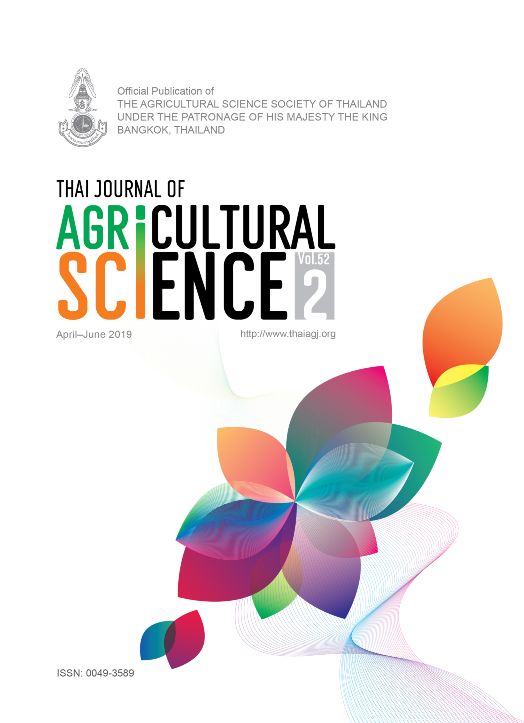Statistical Optimization of Itaconic Acid Fermentation from Oil Palm Empty Fruit Bunch by Aspergillus terreus K17 for the Application in Textile Industry
Main Article Content
Abstract
Itaconic acid (IA) is an important building block chemical, widely applied in textile, chemical and pharmaceutical industries. The effects of solid loading and ammonium nitrate (Na2CO3) concentration on IA fermentation from oil palm empty fruit bunch (OPEFB) were evaluated through response surface methodology (RSM) based on central composite design (CCD). OPEFB was pretreated by steam explosion and then converted into fermentable sugars by enzymatic hydrolysis. The fermentation was carried out through a separate hydrolysis and fermentation (SHF) process by Aspergillus terreus K17. Solid loading and ammonium nitrate concentration clearly affected IA production. IA concentration increased as solid loading and ammonium nitrate concentration increased but began to decline after solid loading and ammonium nitrate concentration reached 160 g/L and 0.03 g/L, respectively. The maximum observed value of IA concentration at 7.43 g/L corresponding with a predicted value at 7.12 g/L was obtained from the optimized medium composition (150 g/L of solid loading and 0.03 g/L of ammonium nitrate concentration). The optimized value was scaled-up toa 3-L air-lift fermenter, temperature 30°C, pH 2.5 and aeration rate 2.0 yielded the highest itaconic acid concentration of 30.45 g/L at 72 h with a yield and productivity of 0.51 g/g and 0.42 g/L/h, respectively.


